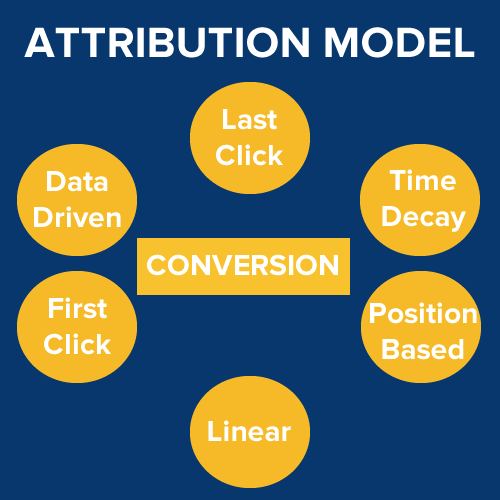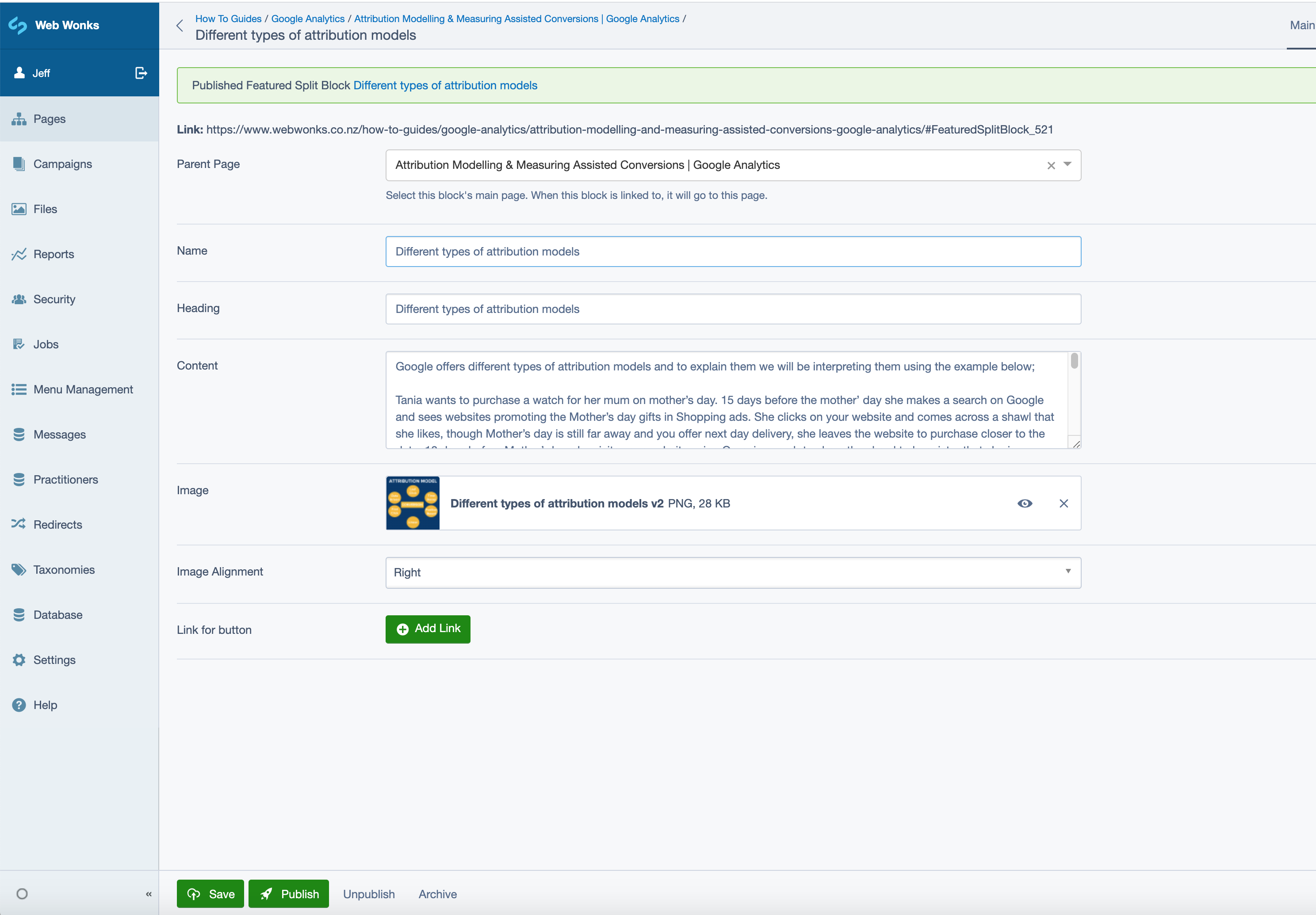In This Lesson You Will Learn What Is
Attribution Modelling & Measuring Assisted Conversions In Google Analytics
The purpose of this lesson is to understand different attribution models, how Google Analytics shows sales or leads against different channels and how you can see the bigger picture in understanding the online ecosystem where your website conversions come from.


Attribution Modelling & Assisted Conversions
What is Attribution Modelling?
When you see the channel report in your Google Analytics and review how much revenue or leads have been received by each channel, it doesn’t entirely show you the complete picture. A user may have viewed or came across more than one channel before completing a conversion on the website.
For example, a potential user views your product on Google Shopping ad and clicks it to visit the website. But he is busy at the moment and decides to come back later and not make the purchase at that time. Later that day he makes another search for your brand name on Google and clicks on your Organic search result. This time the user makes the purchase and Google Analytics credits the revenue against the ‘Organic Search’ channel. In this instance, Shopping ad did initiate the first impression for your website but Google Analytics (by default) uses the last click attribution and only the channel which led the user to the website and completed the purchase at the same time receives the credit.
With attribution models you can compare the performance for different channels in your Google Analytics account and understand their roles in contributing to conversion to your website or initiating a touch point from the potential customer during their journey of making the conversion.
Different types of attribution models
Google offers different types of attribution models and to explain them we will be interpreting them using the example below;
Tania wants to purchase a watch for her mum on mother’s day. 15 days before the mother’ day she makes a search on Google and sees websites promoting the Mother’s day gifts in Shopping ads. She clicks on your website and comes across a shawl that she likes, though Mother’s day is still far away and you offer next day delivery, she leaves the website to purchase closer to the date. 10 days before Mother’ day, she visits your website using Organic search to show the shawl to her sister that she is planning to purchase for mum. 3 days before Mother's day, she remembers that she still hasn’t purchased the shawl and needs to do it quickly. This time she has forgotten your brand name, so she does a quick search again and clicks on your ‘Search campaign’ that you have set up specifically for ‘Mother’s day’ gift ideas. She visits the website and makes the purchase.
- Last Click : As the name suggests, in this model the credit is granted to the channel that has initiated the last click which led the conversion to the website. This is the default attribution model enabled in your Google Analytics. For the above example, only ‘Search Campaign’ will receive the credit for the purchase and $100 value will be added against the Paid Search channel.
- First Click : In this model, the credit is given to the channel that has initiated the first click for the potential user. For the example above, the credit will be associated with the ‘Shopping Campaign’ and $100 revenue will be added against it.
- Linear : In this model, the credit is shared between all channels which the potential user has engaged prior to making the purchase. In our example, Tania came across three channels, ‘Shopping Campaign’, ‘Organic Search’ and ‘Search Campaign’. All three will receive the credit and total revenue will be divided amongst them i.e. $33.33 each.
- Position based : For this model, the credit is associated 40% for the first interaction, 40% for the last interaction and 20% for all channels in between. Using the model in Tania’s example, ‘Shopping campaign’ and ‘Search Campaign’ would get $40 each and ‘Organic search’ would get $20.
- Time Decay : This model gives more credit to the interaction that happened closer to the conversion. For our example, Search campaign will get most share for the credit followed by Organic search and then Shopping campaign
- Data Driven : For this model, Google uses ‘machine learning’ to understand conversions based on the past data in the account. This model is only available in limited accounts which have enough data.
Measuring Assisted Conversions in Google Analytics
You can calculate the assisted conversions from different channels in your Google Analytics account by using the steps below:
- Go to your Google Analytics account, ensure you are in the correct view.
- Go To Acquisitions > Channels, the Revenue number displayed here is what you will count as ‘Actual Revenue’ against each channel.
- Go To Conversions > Multi Channel Funnels > Assisted Conversions
Use the formula
"Assisted Conversion Revenue = (Assisted Conversion Value + Last Click Or Direct Conversion Value) - Actual Revenue"
Where,
- Actual Revenue = Revenue displayed under Acquisitions > Channels
- Last Click Or Direct Conversion Value = Revenue displayed in Conversions > Multi Channel Funnels > Assisted Conversions, under ‘Last Click Or Direct Conversion Value’
- Assisted Conversion Value = Revenue displayed in Conversions > Multi Channel Funnels > Assisted Conversions, under ‘Assisted Conversion Value’
Few points to remember
- Ensure the date range you have selected in Google Analytics matches the ‘Look back window’ period under Assisted Conversions.
- Always check the ‘Actual Revenue’ before the ‘Assisted Conversion Revenue’ as the latter is dependent on the former.
- The Revenue calculation in Google Ads and Google Analytics will always be different. You should use the calculations provided under Google Analytics as a benchmark. Google Ads uses ‘Position based attribution model’ and Google Analytics uses ‘Last Click attribution’ by default.
Using the Model Comparison Tool
By comparing the Google Analytics data for different attribution will give you insight for contribution from different channels in your account. Follow the steps below to see this report:
- Go to your Google Analytics Account, ensure you are in the correct view.
- Select Conversions > Multi-Channel Funnels > Model Comparison Tool
- Select the date range on top right and also the look back window (same period as your date range)
- Select the correct ‘Conversions’ under Conversion Segments
- Select ‘All’ under Type for all channels or ‘Google Ads’ for only Google Ads data.
- ‘Last Click’ attribution will already be selected in the report, you can add another attribution model by clicking on ‘Select model’.
- Once you have selected a second attribution model, the report view will display the % change in conversions against each channel in the last column.
- You can see if you would have selected a different attribution model, how it would have increased or decreased conversions data from the respective channel.
If you are having an issue, we can help. Please get in touch.
For a new Google Analytics account, the default attribution model is ‘Data Driven’.
Yes, while implementing conversions in Google Ads you can select the preferred attribution model for the conversion action.
It is very helpful to use a different attribution model other than the ‘last click’ in your Google ads as it will help the automated bidding strategies for your campaigns to understand the bigger picture which will improve your conversions with Google's machine learning.
In Google Analytics specially for GA4, the attribution model has evolved. Assisted conversions are recognized for channels that contribute to conversions, regardless of the last click. GA4 provides insights through reports like Conversion Paths, highlighting the impact of different channels. Gain a comprehensive understanding of user journeys and optimize your marketing strategies with GA4.
